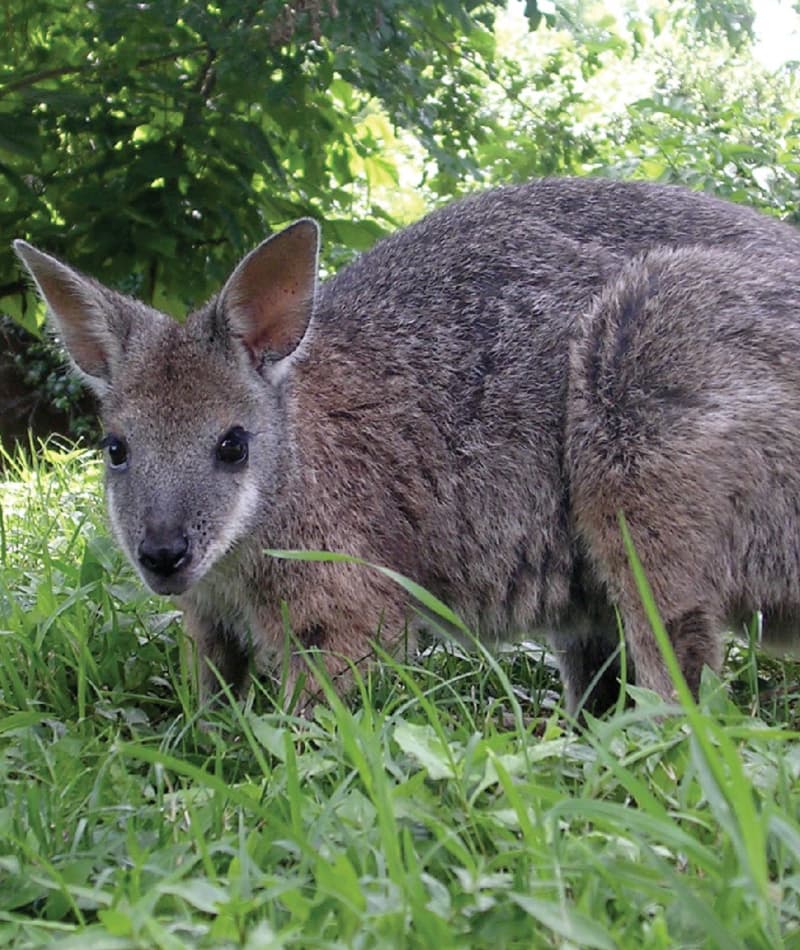
Tammar Wallaby
Macropus eugenii
Did you know?
- They are named “tammar” after the tamma sheoak shrub thickets, which provide shelter during the day.
- Tammar wallabies often live in groups called mobs.
- Wallabies move forward by hopping, using their back feet to push off and their tails for balance.
- If they sense danger, they will give warning thumps with their hind legs.
- Body length is 20 to 27 inches and weight ranges from 15 to 20 pounds.
Kangaroo Cousin
Like its cousin the kangaroo, the Tammar wallaby is a marsupial (pouched mammal) and a member of the macropod ("large foot") family. Basically, a wallaby is any macropod that is not large enough to be considered a kangaroo. There is no defined distinction between the two.
Nocturnal Eater
The Tammar wallaby spends its day at rest under dense vegetation and will only emerge to eat after dark. Though several wallabies may eat together, they do not form large groups. The wallaby is able to survive in its dry habitat by drinking sea water when fresh water is not available.
Threat Level
- Unknown
- Common
- Near Threatened
- Threatened
- Endangered
- Critically Endangered
- Extinct in the Wild
Least Concerned
The Tammar Wallaby's wild population is stable.
Range
Australia
Habitat
Thickets and shrublands

We care about tamar wallabies
The Saint Louis Zoo supports tamar wallabies in Red Rocks at the Zoo. Learn more about how we are helping wildlife around the world.
Find this animal in Red Rocks

SAINT LOUIS ZOO ZONE
Red Rocks
At Red Rocks, you’ll view some of the world’s most powerful predators living near some of the world’s most graceful prey. Lions, tigers, zebra and giraffes all share the natural rocky boulders and outcroppings as their territory. With shading trees and a bird or two among the mammals, Red Rocks is a great place to spend a day at the Saint Louis Zoo.

